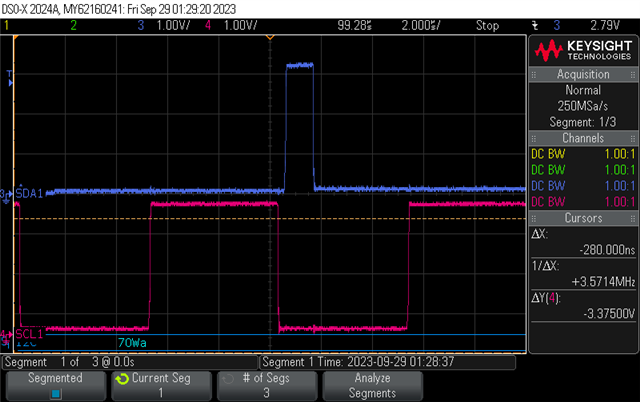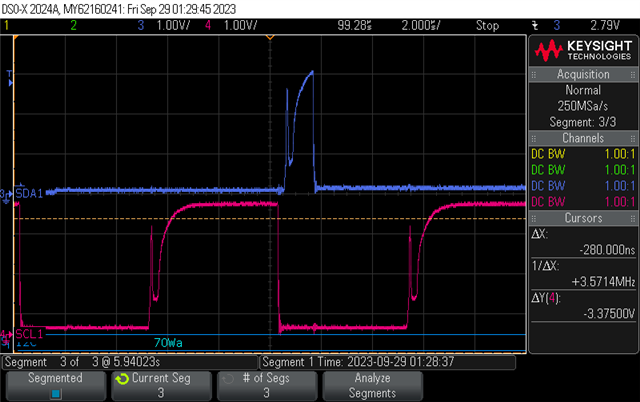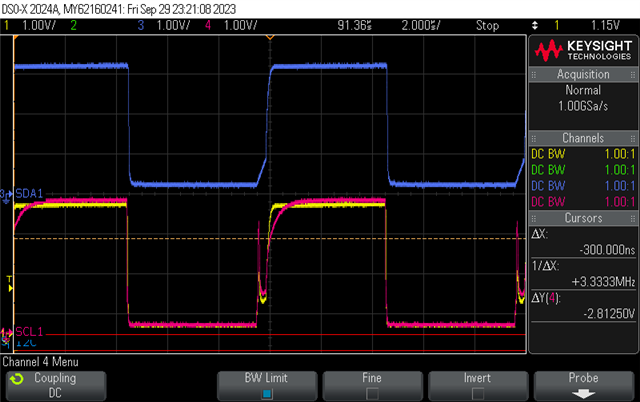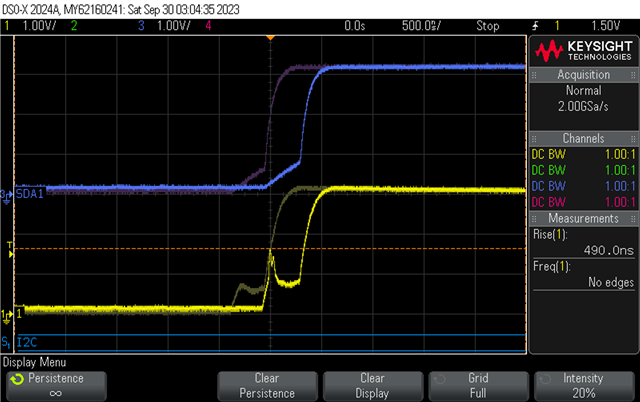Other Parts Discussed in Thread: TCA9548A, , TCA9406
Hello,
I have a system that looks roughly like the following block diagram.

- I issue a command to TCA9548A to disconnect all downstream channels (write 0 to 0x70)
- I write some data to an I2C Slave on the Control Card. Successful.
- I issue a command to the MUX to attach the shown Daughter Card (write 1 to 0x70)
- I repeat the command from Step 2. Failure.
- I repeat the command from Step 1. Success.
- I repeat Step 2. Success.
It appears that connecting the Daughtercard to the bus causes errors to occur on the Control Card bus. Note that I have no problems talking to the Daughtercard Slave device when it is connected.
In the below scope captures, Pink is SCL, Blue is SDA. I have indicated the probe point in the block diagram. The below captures are the exact same commands sent to the bus. In Image 1, the daughtercard is not connected. In Image 2, the daughtercard is connected.


Any help troubleshooting is appreciated.
Thanks,
Michael




